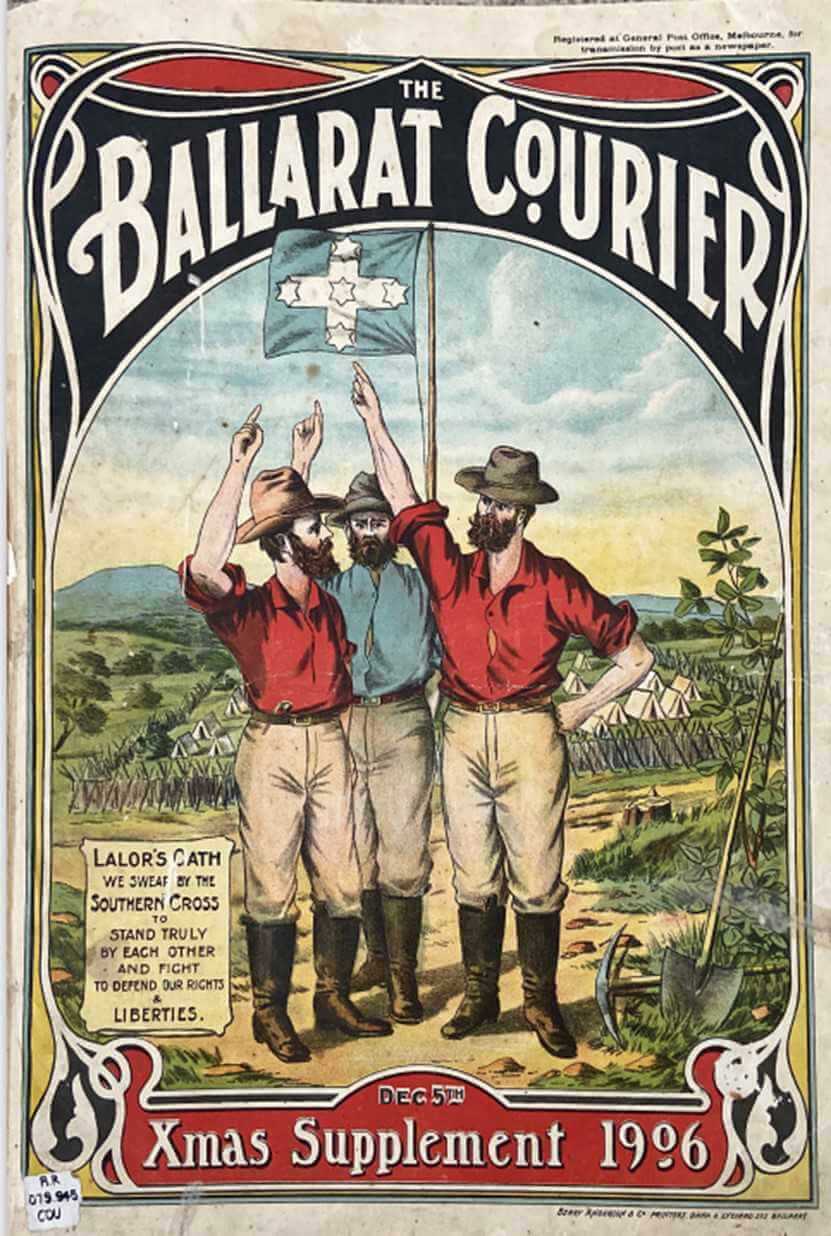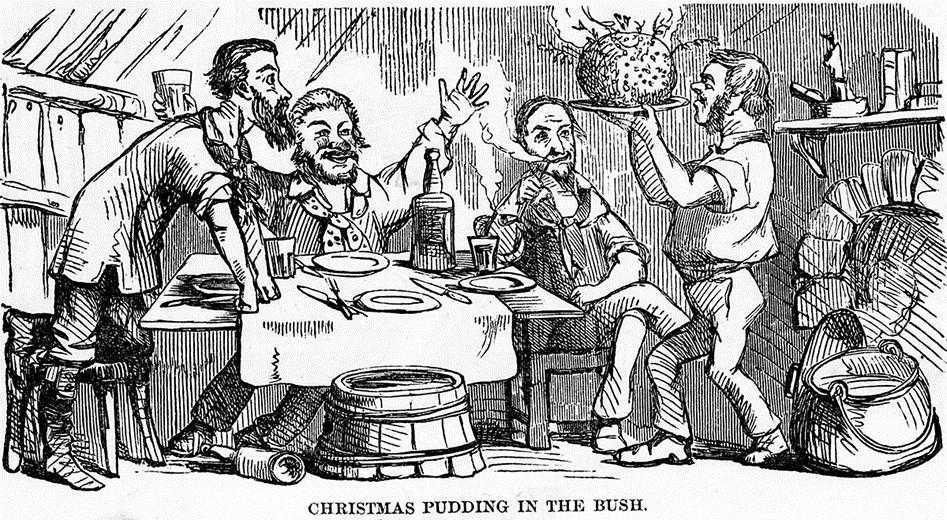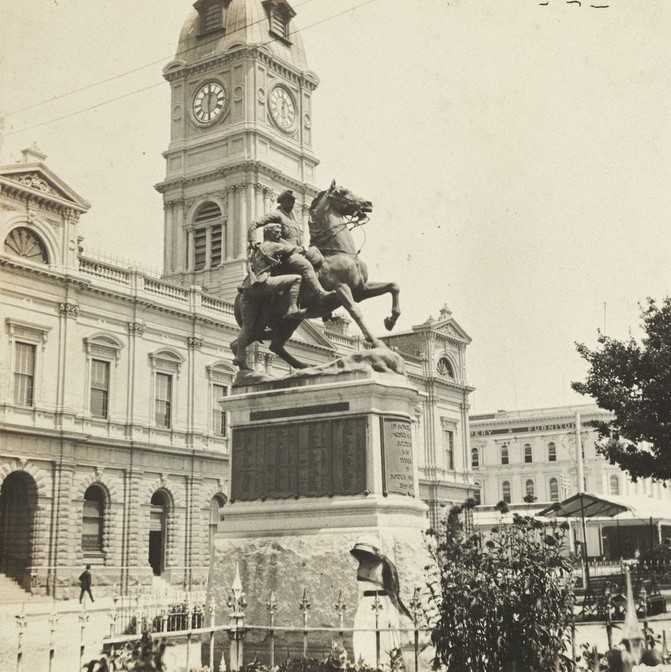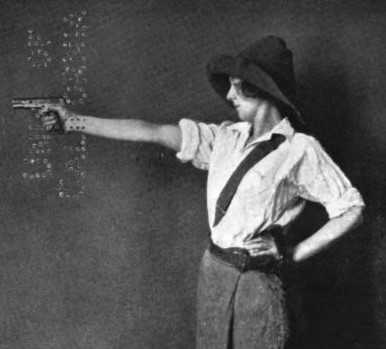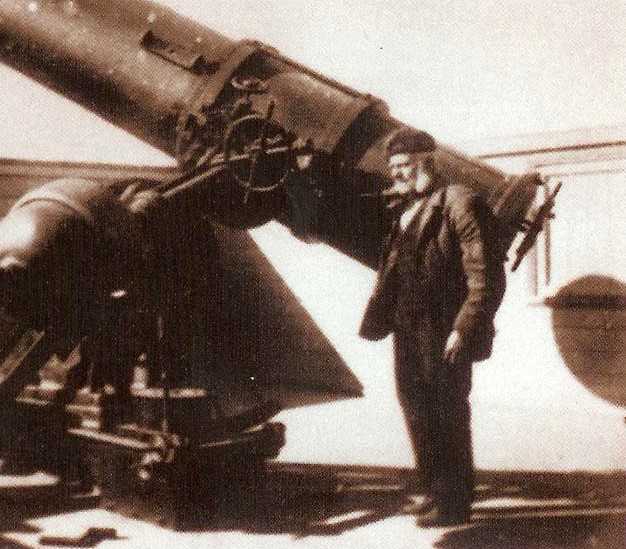For the early settlers of Ballarat, the Christmas experience must have been a very different one to what they had been used to. They were often far from home with weather conditions they never associated with Christmas. Gone were the cold white Christmases of their homelands, replaced with hot dry ones.
While the houses and streets may not have been adorned with Christmas decorations, the pioneers still tried to “create a festive and joyous atmosphere that could remind them of Christmas back home.” (1)
Nathan Spielvogel notes that “Christmas 1857 in Ballarat was a very hot, dusty one. This did not prevent hundreds of housewives from taking their shopping baskets seeking things for Christmas dinner.” (2) Spielvogel further notes that church services were conducted around Ballarat and “then home to their tents for the roast goose and plum pudding which somehow did not taste as good as it used to do” (3)
This article appeared in the Ballarat Star on 27 December 1858 and describes the experience of a colonial Christmas in Ballarat: https://trove.nla.gov.au/newspaper/article/66333006
A report in The Ballarat Star in December 1859 described Christmas in Ballarat: “Christmas Eve in Ballarat filled our throughfares with crowd upon crowd of people shopping for the morrow’s dinner, or for the ‘boxes’ to give memory of the season.” (4)
As it is today, the economic benefits that Christmas provided was extremely important in regional towns like Ballarat in the early twentieth century. In competition with other regional cities, Ballarat sought to provide unique experiences to entice holiday makers. As Weston Bate writes “so significant was the holiday trade that there was ill feeling between towns if one pirated a date traditionally occupied by festivities elsewhere.” (5)
Bate further notes that “Christmas was especially important when country towns were compensated for the loss of sons and daughters to Melbourne who returned home to see family and friends. In 1921 The Ballarat Courier estimated the Ballarat’s population of 40,000 increased by 10,000 people. (6) Obviously this was a huge economic boost to the Ballarat economy.
In the early 1900s one of the highlights of Christmas in Ballarat was the publishing of the Ballarat Courier Christmas supplement. As Tom Mcllroy notes in his article, “…for decades, The Ballarat Courier ‘Christmas Supplement’ was a regular feature of the festive season showcasing the businesses and personalities of our city”. (7) The City of Ballarat’s Australiana Research Collection is fortunate to have several editions of this publication amongst its collection. The Eureka Stockade-themed front cover of the 1906 supplement is featured below.
Another Christmas highlight in the Ballarat region, especially in the early 1920s, was the presentation of sporting events. Bate tells us that a cycling event took place on Boxing Day 1922 in Beaufort. “Nine of the thirteen starters on Boxing Day 1922 were from Ballarat. Typical track events were the Beaufort Wheel Race over nine miles. (8)
Athletics was another sport which featured over the Christmas period. Bate informs us, “...the 1921 Christmas Gift provided good completion through the twelve heats, semi-finals and finals, numerous sprint, distance, as well as A and B grade tug-of-war.” (9)
Here is a link to the article in The Ballarat Star, December 24, 1921 about the Athletic Carnival: https://trove.nla.gov.au/newspaper/article/219326125/21869759
By 1925 the Athletic Carnival lacked support and was not held as this article from The Sporting Globe on 19 December 1925 tells us: https://trove.nla.gov.au/newspaper/article/184829771?searchTerm=%22christmas%20in%20ballarat%22#
Many of the Christmas traditions established during the Victorian era are still with us today, including roast meats and plum pudding, gift giving and special sporting occasions, notably test cricket on Boxing Day.
One of the most enduring traditions is the Christmas tree, which became popular when ‘…periodicals such as the Illustrated London News…(depicted)…royal Christmas trees every year from 1845 until the late 1850s…the custom of setting up such trees in their own homes caught on with the masses in England.”, and subsequently in the Australian colony. (10)
On behalf of the staff at BRHAE and the Eureka Centre I would like to wish everyone best wishes and season’s greetings for the holiday period.
Simon Jacks
Australiana Research Librarian
FOOTNOTES
1. Sovereign Hill Education Unit, ‘A colonial Christmas in Ballarat’, 14 December 2012. https://sovereignhilledblog.com/2012/12/14/a-colonial-christmas-in-ballarat/ Retrieved 15/12/2021
2. Spielvogel, Nathan. (2004). The Spielvogel Papers. Ballarat; Ballarat Historical Society. Vol.1. p.93).
3. Spielvogel, p. 94
4. The Ballarat Star, December 26, 1859, p. 2
5. Bate, Weston.(1993). Life after gold: twentieth century-Ballarat. Melbourne; Melbourne University)
6. Bate. p.7
7. Mcllroy, Tom. Memories of Ballarat Christmas 100 years ago. Ballarat Courier, December 11, 2011. Online article.
8. Bate. p..157
9. Bate, p.157
10. Barnes, Alison, ‘The First Christmas Tree’ in History Today, Vol 56, 12 December 2006 https://www.historytoday.com/archive/history-matters/first-christmas-tree Retrieved 15/12/2021
